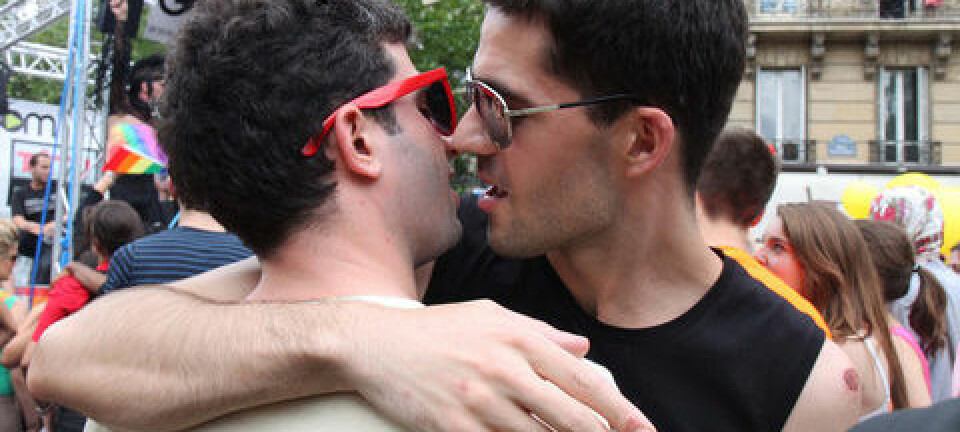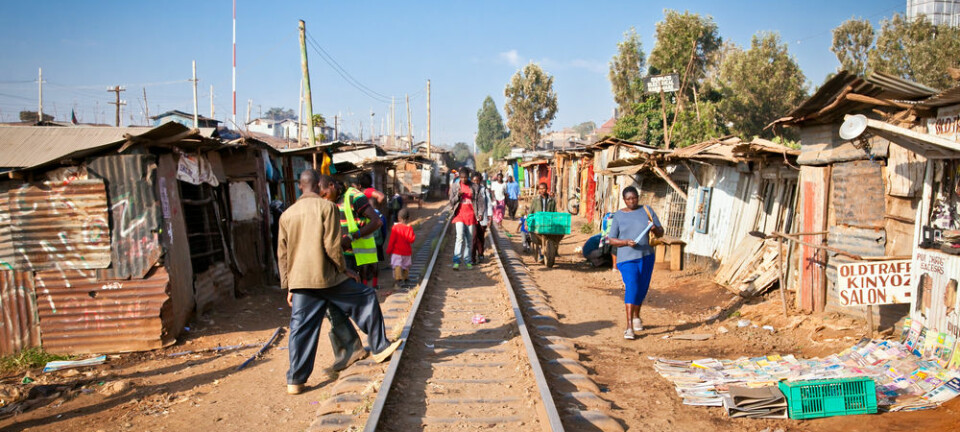
Roma and Romanians opt for Oslo despite abuse
Many homeless Roma and Romanians who panhandle on the streets of Oslo have experienced being spat on, struck or kicked. Despite such incidents, many like it in Oslo and plan to return.
Denne artikkelen er over ti år gammel og kan inneholde utdatert informasjon.
The Norwegian media produced a flurry of stories about residents of Oslo who mistreat homeless Romanians and Roma in the wake of a report by the independent research institute Fafo.
Over half of these homeless persons claim to being harassed on the streets, according to the Fafo study.
Since Romania became a member of the EU in 2007, homeless Romanians have had the right to come to Scandinavia, but as non-residents they have no access to regular social services and benefits.
Resident populations are not overjoyed about their presence on city sidewalks, but direct harassment and mistreatment is not the general rule, according to Guri Tyldum, one of the authors of the report “When poverty meets affluence”. This is a large study of Romanian immigrants who eke out meagre livings on the streets of Scandinavia.

“Many also emphasise that they are treated kindly here in Norway. They are happy that so many meet them with respect, compared to what they are used to where they come from.”
Bullied mostly by drug addicts
The study found that the Norwegians who mistreat Roma in Oslo the most are also at the bottom of the social ladder – drug addicts.
The researchers think competition for prime begging locations and sales of magazines on the street partly explains the higher level of conflict in Oslo among these groups.
Interviews with victims indicate that private security personnel also tend to hastle these Roma and non-Roma migrants from Romania.
Fewer wish to return to Stockholm
A large share of the 1,269 persons interviewed in the study say they will return to Oslo again, despite encountering some unpleasant experiences.
Not surprisingly, those whose encounters with Scandinavians are agreeable are generally more prone to plan and make return visits. But the researchers found that poor treatment was not a decisive factor.
Only a minority interviewed in Stockholm say they plan to return to Sweden.
This looks like a paradox. The Swedish capital is the city where these homeless persons claim to be generally treated equitably by the police and others. Contrary to Copenhagen, Stockholm has no law against begging, nor does it have vagrancy laws prohibiting sleeping outdoors, as in both Oslo and Copenhagen.
Less money in Sweden
The researchers suggested why more of these homeless persons wished to return to Norway than to Sweden.
Jon Horgen Friberg, another of the authors behind the report, reckons that the size of earnings is a big factor.
Those who make the most money are more likely to return between trips to Romania.
Average proceeds from begging and street work differ greatly. Migrants on the streets of Oslo can make the equivalent of about $25 a day. They fill their cups with less in Stockholm and more in Copenhagen.
“Also, this type of migration is a newer phenomenon in Stockholm. Many make do and some give up when a new migration channel is established. The situation hasn’t fully gelled yet in Stockholm,” claims Friberg.
Great diversity
The Scandinavian capitals have much in common. But the groups who come from Romania to Oslo, Stockholm and Copenhagen are also quite diverse.
Stockholm and Copenhagen differ the most with regard to the ethnic backgrounds of the Romanian migrants, while Oslo is in the middle.
The people who beg in the streets of Stockholm are mainly Roma and many of them are frightfully deprived economically, socially and educationally. Nine out of ten have never gone to school or had any formal job training. Many are illiterate. They tend to come as couples or in tightly knit family groups from rural Romania.
Those in Copenhagen are a more ethnically mixed group comprised of ethnic Romanians or Roma. They travel in small groups and more often tend to be young men. They usually have more schooling and can read and write. Many have work experience in Romania or Southern Europe.
Several have worked for substandard wages as migrant farmhands in Italy and Spain, before they were replaced by even cheaper labour – illegal African immigrants.
Friberg says the Roma and Romanians in Copenhagen tend to be tougher and have more street-smarts:
“A young man told me you can make good money in Copenhagen if you can run fast, because the police will always be after you. So this isn’t a place for old ladies to sit on the sidewalk and beg.”
Copenhagen outlaws sleeping outdoors and begging. Police methods are also more heavy-handed than in the other two capitals, according to the homeless persons in the study.
More criminality in Denmark
Romanians and Roma in Copenhagen are much closer linked to the city’s drug scene than their counterparts in Oslo and Stockholm. They are more likely to make a living as criminals. Out of necessity, they are also less conspicuous on the streets than in the other two cities.
In Stockholm they sleep on the streets and make their living entirely from begging and collecting empty beverage cans and bottles. Stockholm dwellers nearly had to watch their steps to avoid stumbling on them last summer.
Oslo supports a more diversified group.
The background of many seen begging on the sidewalks of Oslo is much like that of those in Stockholm. They are severely deprived and three out of ten Roma women in Oslo are illiterate.
The Norwegian capital has also been visited by criminal groups from Romania. One such band hung around the rather slummy Vaterlandsparken at Oslo’s urban East End while the researchers were doing their fieldwork. They specialised in smuggling pills from Romania and peddling them to Norwegian addicts.
“We have strong indications that they disappeared after police intensified efforts against street sales of drugs,” says Anne Britt Juve, the third author of the report.
A day in Maria’s life
Begging is legal in Oslo but not sleeping outdoors in parks, doorways, etc. This means that many spend a lot of time at night hiding from the police.
Maria is a Roma in her 40s. She came to Norway with her husband in 2006. She has mainly lived in a makeshift lean-to in the woods on the outskirts of Oslo, explains Guri Tyldum. Her daily routine is no party.
Maria uses an hour to get to a subway line and an hour to get back to her forest home in the evening.
She meets her friends at the Central Railway Station Square every morning at 08:15. They have a cup of coffee before starting their day of begging.
Warm food and cooked meals are rare treats in the woods. If they use propane cookers or make a fire their sleeping spot in forest could be detected.
Maria says that she and other Roma women – unmistakeable in their long traditional skirts – are increasingly denied service at kiosks. These are where they buy their single cups of coffee, often the only warm thing they will consume in the course of a day.
------------------------------
Read the Norwegian version of this article at forskning.no
Translated by: Glenn Ostling
































